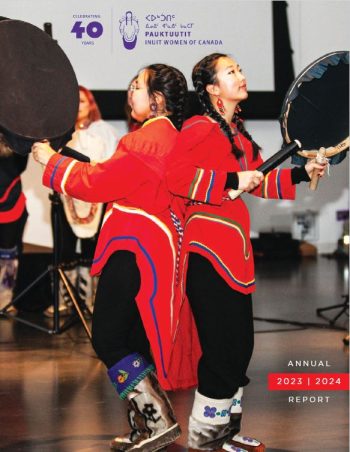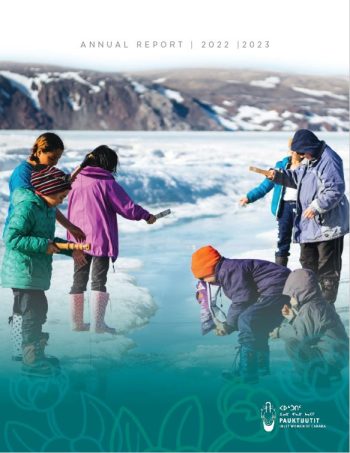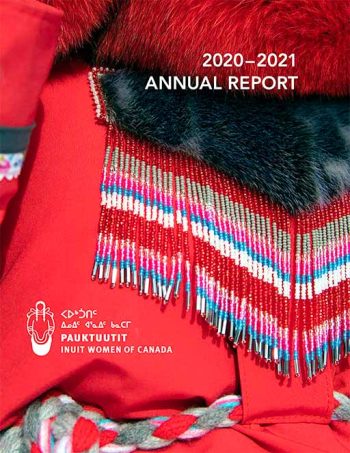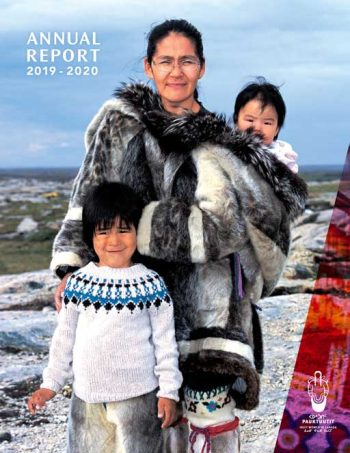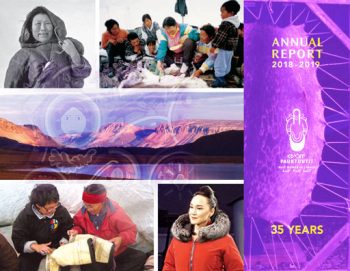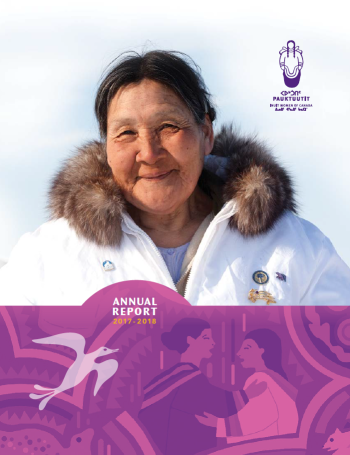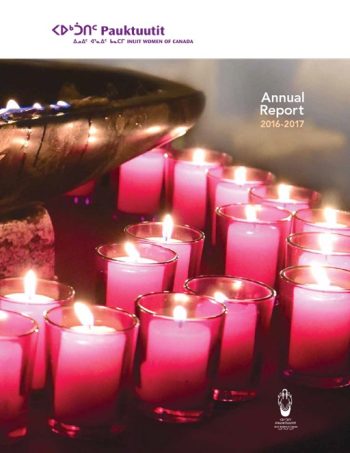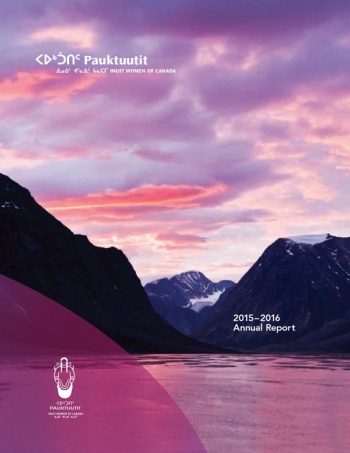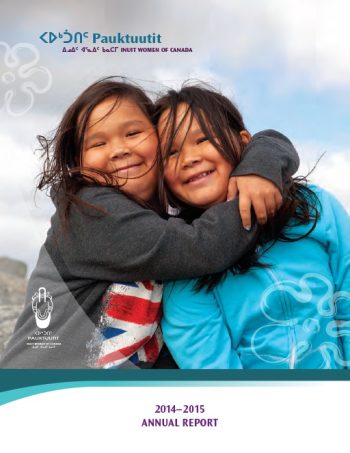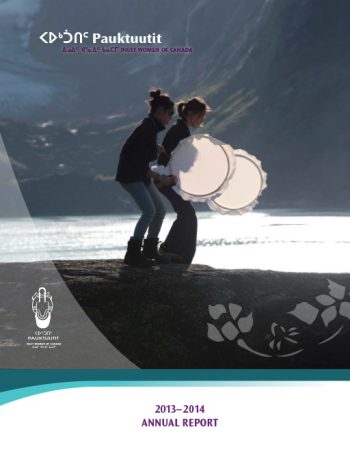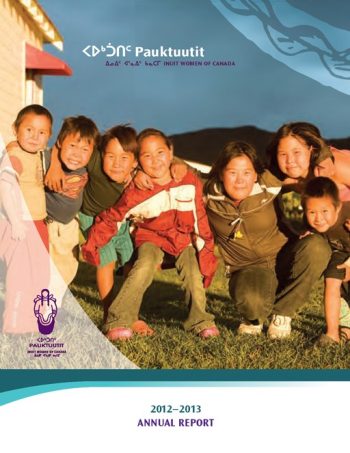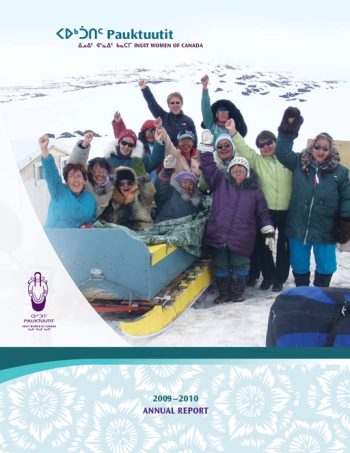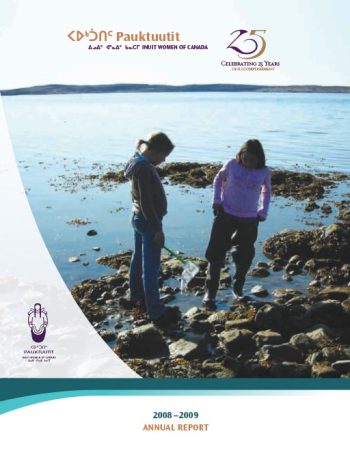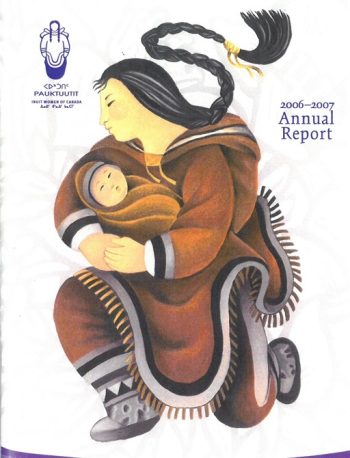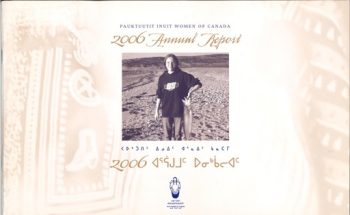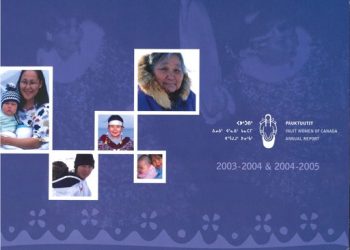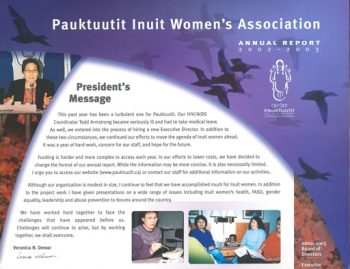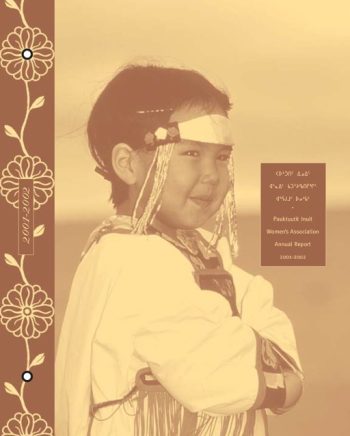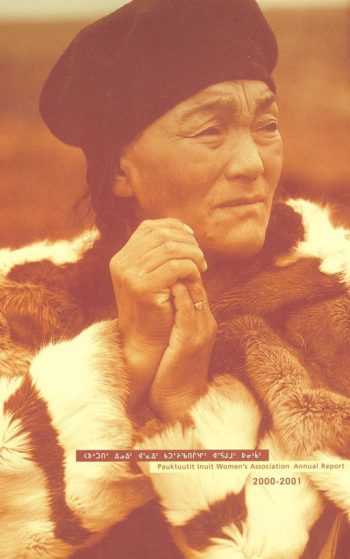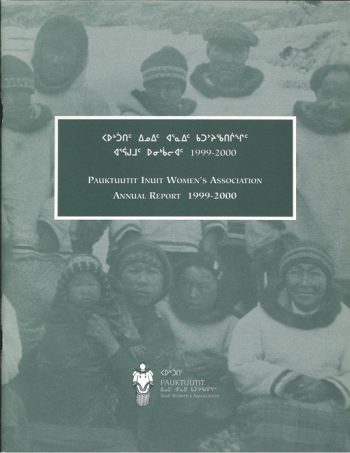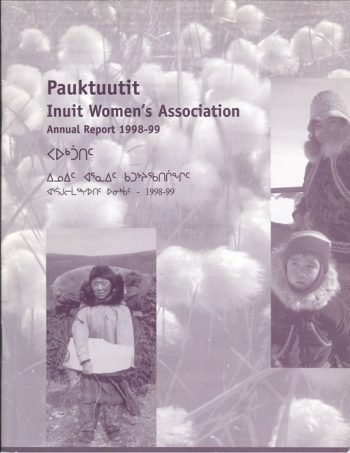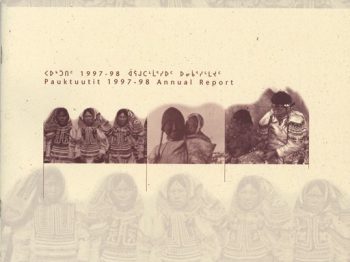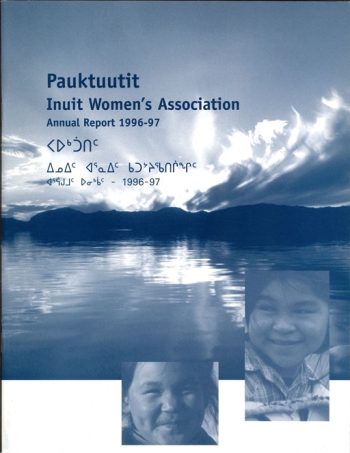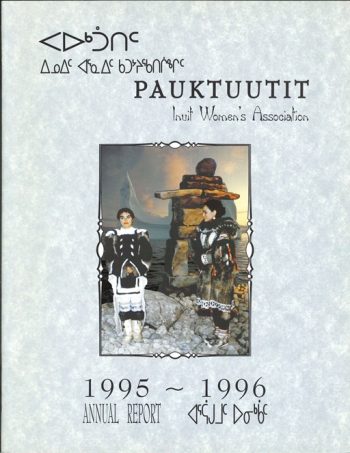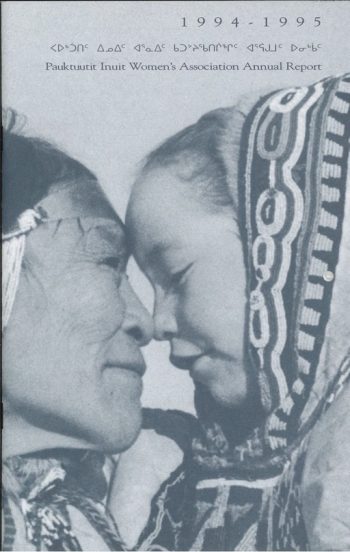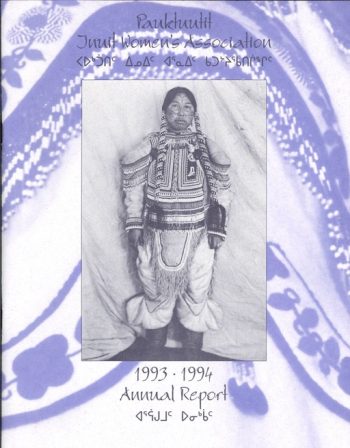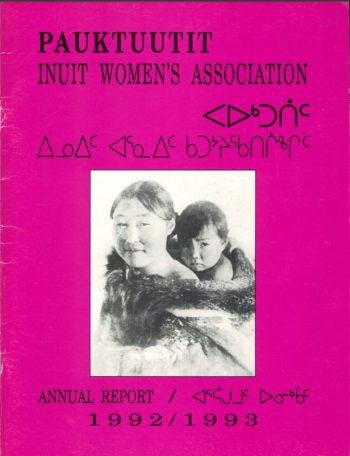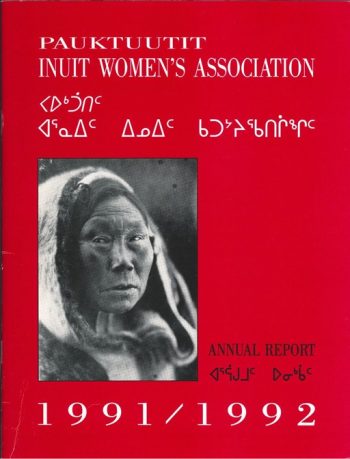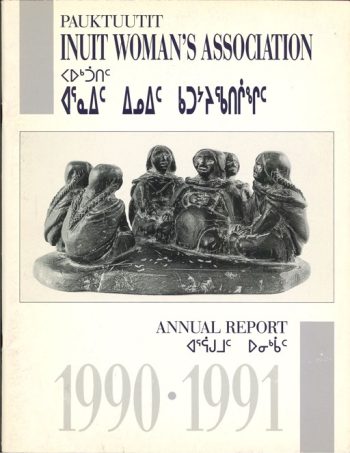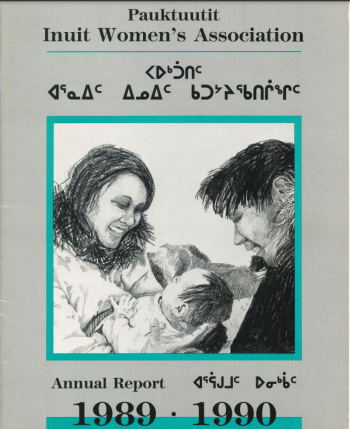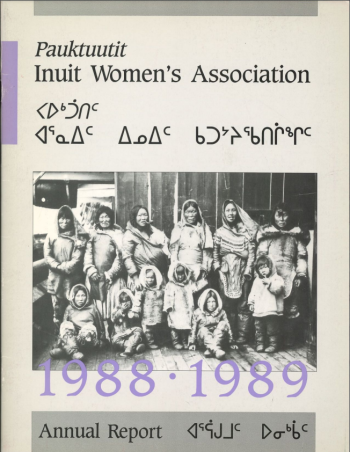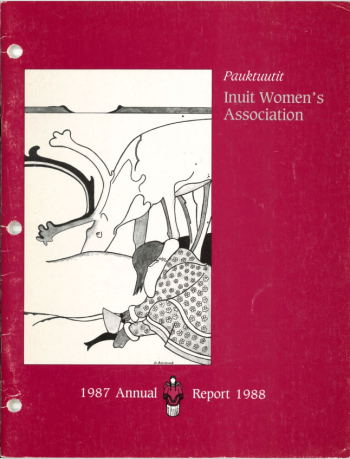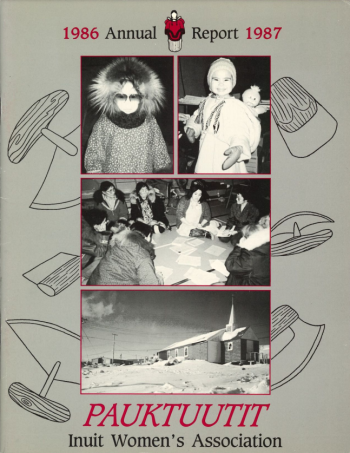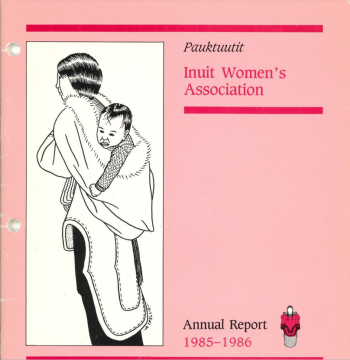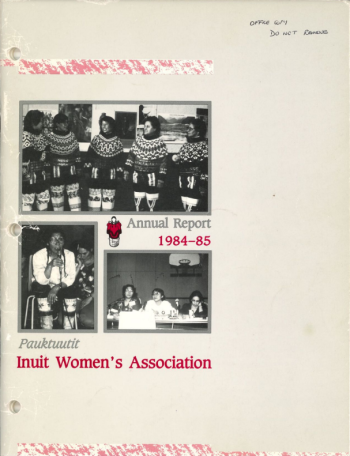Publications
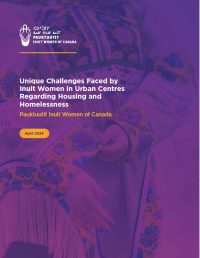
Unique Challenges Faced by Inuit Women in Urban Centres Regarding Housing and Homelessness
Pauktuutit initiated this project to better understand the unique challenges related to housing and homelessness for Inuit women in urban centres. This work sought to explore how urban Inuit women deal with housing challenges in southern Canadian urban centres and to understand the unique obstacles they encounter. The research was conducted following the principles of Inuit Qaujimuituqangiit, Pauktuutit’s Inuit‑Specific Gender‑based Analysis Plus (GBA+) framework, intersectionality, and distinctions-based understandings.
Year Published October 2024
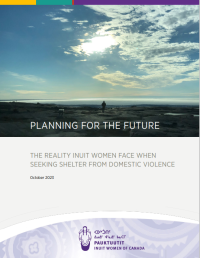
Planning for the Future: The Reality Inuit Women Face When Seeking Shelter From Domestic Violence
This study reports key findings related to the availability of shelters and safe spaces for women and gender-diverse people and their children in Inuit Nunangat and in southern urban centres, including barriers that both clients and service providers regularly encounter and opportunities to improve the quantity and quality of service. Through utilizing existing data, a survey, and key informant interviews, this project addresses significant gaps in knowledge around the realities in supports and services available for this vulnerable population.
To undertake this work, Pauktuutit Inuit Women of Canada contracted to collect and analyse survey and discussion group data to provide a better understanding of the use and access to shelters, the specific experiences of Inuit women, gender-diverse individuals, and their children, and what their needs are with respect to shelter facilities, communities, and infrastructure.
Year Published: 2024
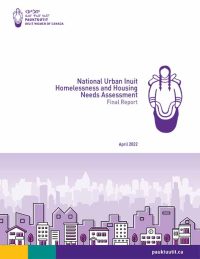
National Urban Inuit Housing and Homelessness Needs Assessment Final Report
Assisted by a consulting firm, Pauktuutit conducted an analysis of housing services available to Inuit and interviews of service providers in twelve urban centres: Ottawa, Montreal, Toronto, Winnipeg, St. John’s, Happy Valley-Goose Bay, Halifax, Regina, Edmonton, Yellowknife, Victoria, and Fredericton, and conducted interviews with non-Inuit service providers in these cities. The reports, National Urban Inuit Housing and Homelessness Needs Assessment: Research Summary and National Urban Inuit Housing and Homelessness Needs Assessment: Service Provider Interviews summarize responses of service providers in each city and offer overarching themes and observations from the interview processes. Additionally, Pauktuutit completed a review of examined international homelessness approaches and strategies to leverage those practices for the betterment of Inuit in Canada, completed a literature review focussed on the adequacy and effectiveness of homelessness programs and services for urban Inuit in Canada, and an overview of homelessness and housing programs and services in the 12 designated urban All documents may be obtained by contacting Pauktuutit’s Social and Economic Development team by email at lijtemaye@pauktuutit.ca.
https://pauktuutit.ca/wp-content/uploads/Pauktuutit_Reaching-Home_Final-Report_Inuktut.pdf
Year Published:2023
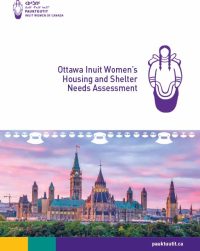
Ottawa Inuit Women’s Housing and Shelter Needs Assessment
This research was funded by Canada Mortgage and Housing Corporation (CMHC), however, the views expressed are the personal views of the author(s) and CMHC has no responsibility for them.
https://pauktuutit.ca/wp-content/uploads/Pauktuutit_Housing_English_03.pdf
https://pauktuutit.ca/wp-content/uploads/Pauktuutit_Housing_Inuktitut.pdf
Year Published: 2021
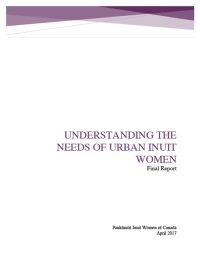
Understanding the Needs of Urban Inuit Women – Final Report
This report examines Inuit women’s experiences in five major Canadian cities: Edmonton, Winnipeg, Toronto, Ottawa and Montréal. Women’s stories reveal that migration rationale does not usually take the form of a linear and logical sequence of events. Rather, a combination of factors simultaneously pushes them away from their hometowns and pulls them into cities. While some women actively seek better opportunities in southern urban centres, the cost of housing and poor-quality services in the North also push them into migration pathways. Many interviews revealed that living in the city often felt like a “consequence” rather than a personal choice.
https://pauktuutit.ca/wp-content/uploads/358996508-Final-Report-UAS-Urban-Research-April-2017.pdf”
Year Published 2017

Fact Sheet: Why do Inuit women move South?
Each year, Inuit women leave their home community to move to urban centers in southern Canada. The pathway to city life from Inuit Nunangat is different for everyone, but there are many common reasons Inuit women move to the south. Here are some of the top reasons that we heard from Inuit women about why they move to big cities across Canada.
https://pauktuutit.ca/wp-content/uploads/UAS_factsheet_push_pull_factors.pdf
Year Published 2018
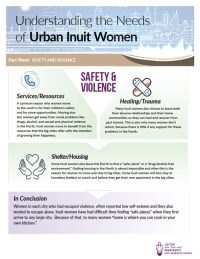
Fact Sheet: Safety and Violence
Women in each city who had escaped violence, often reported low self-esteem and they also tended to escape alone. Inuit women have had a difficult time finding “safe places” when they first arrive in any large city. Because of that, to many women “home is where you can cook in your own kitchen.”
https://pauktuutit.ca/wp-content/uploads/UAS_factsheet_safety_violence.pdf
Year Published 2018
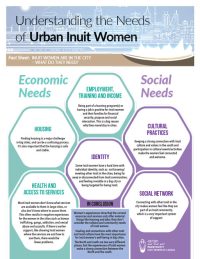
Fact Sheet: Inuit women are in the city – What do they need?
Women’s experiences show that the current resources and services only offer material things like housing and jobs; they don’t consider the cultural and community needs of Inuit women. Healing and connections with other Inuit and Inuit culture have the most importance for Inuit women’s well-being in big cities. The North and south are two very different places, but the experiences of Inuit women make a strong connection between the North and the south.
https://pauktuutit.ca/wp-content/uploads/UAS_factsheets_needs.pdf
Year Published 2018
